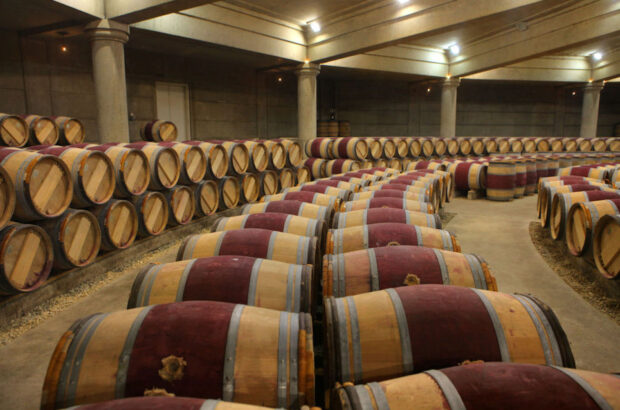Bordeaux will produce the least wine in six years in the 2023 harvest, after Merlot grapes in particular were ravaged by downy mildew, according to data from the French agriculture ministry.
By contrast, Burgundy and the Loire Valley are heading for vintages that are likely to be among the biggest of the past decade.
While overall French wine production is forecast to fall 2% to 45 million hectoliters, close to the five-year average, various growing areas had contrasting fortunes, the French agriculture ministry said on Friday (8 September) in its first detailed forecast of wine production by region in the 2023 harvest.
‘The attacks of downy mildew in Bordeaux and the Southwest, and the drought in Languedoc and Roussillon, impact the harvest potential,’ the ministry said. ‘Elsewhere, the situation is globally favorable for production despite the presence of botrytis at the end of the campaign.’
France is set to take the spot as the world’s largest wine producer this year, with extreme heat and drought forecast to reduce the harvests in Italy and Spain.
While French growing areas in the south faced similar weather issues as the country’s neighbours, vineyards along the Loire River and to the north benefited from summer rains and generally more clement conditions.
Around France
Bordeaux’s production of wines with a protected designation of origin is forecast to fall 10% in the 2023 harvest, to 3.72 million hectolitres, the ministry said. That would be the smallest volume since 2017, when a late spring frost decimated production.
The region was hit by what the agricultural chamber of Gironde called a ‘brutal attack’ of downy mildew, with at least 90% of vines affected by the microbial disease. Bordeaux producers have said the situation varies significantly , and some remained upbeat about potential quality.
In Languedoc-Roussillon , overall wine production is expected to slide 8% to a below-average 11.6 million hectoliters, as drought caused grapes to remain small in many areas. The region is France’s biggest growing region, with more than 75% of production typically sold as bulk wine without a PDO label.
In Burgundy and Beaujolais, which are combined in the ministry’s reporting, volumes of PDO wines are forecast to climb 8.2% to 2.55 million hectolitres.
The potential in Burgundy is promising, with a high number of bunches, despite some localized botrytis in the grapes, according to the report.
Episodes of hail, which have been a major cause of production losses for Burgundy in recent years, had a limited local impact.
Wine volumes in the Loire Valley are forecast to climb 16% in the 2023 harvest, with a good level of white wines. Expected good yields should allow the region to set wine aside as a reserve after two years of weak production, the ministry said.
Optimism in Champagne
In Champagne, the grape harvest for wine to be sold under the region’s protected name is forecast to slip 5.3% to a potential 2.82 million hectoliters, with botrytis affecting some vines. That would still be the second-highest volume of the past decade, after a bumper crop last year.
‘Thanks to the numerous grapes, even after sorting to retain only the best, all professionals should easily reach the available yield set at 11,400 kg/ha,’ said David Chatillon, president of the union of Champagne houses and also co-president of the Comité Champagne wine board.
Harvesting in Champagne started on 2 Sept, with most of the region starting to pick grapes this week, the Comité Champagne said.
It added the growing season was ‘particularly serene’ until the end of July, before warm and humid conditions in August caused the emergence of botrytis. Still, the weather also favored grape filling and unusually heavy bunches, allowing winemakers to be selective during picking.
‘Despite difficult weather during maturation, the region is expecting a harvest of great quality,’ the Comité Champagne said.






